Vincent van Gogh
Vincent van Gogh was one of the world’s greatest artists, with paintings such as ‘Starry Night’ and ‘Sunflowers,’ though he was unknown until after his death.

(1853-1890)

Who Was Vincent van Gogh?
Vincent van Gogh was a post-Impressionist painter whose work — notable for its beauty, emotion and color — highly influenced 20th-century art. He struggled with mental illness and remained poor and virtually unknown throughout his life.
Early Life and Family
Van Gogh was born on March 30, 1853, in Groot-Zundert, Netherlands. Van Gogh’s father, Theodorus van Gogh, was an austere country minister, and his mother, Anna Cornelia Carbentus, was a moody artist whose love of nature, drawing and watercolors was transferred to her son.
Van Gogh was born exactly one year after his parents' first son, also named Vincent, was stillborn. At a young age — with his name and birthdate already etched on his dead brother's headstone — van Gogh was melancholy.
Theo van Gogh
The eldest of six living children, van Gogh had two younger brothers (Theo, who worked as an art dealer and supported his older brother’s art, and Cor) and three younger sisters (Anna, Elizabeth and Willemien).
Theo van Gogh would later play an important role in his older brother's life as a confidant, supporter and art dealer.
Early Life and Education
At age 15, van Gogh's family was struggling financially, and he was forced to leave school and go to work. He got a job at his Uncle Cornelis' art dealership, Goupil & Cie., a firm of art dealers in The Hague. By this time, van Gogh was fluent in French, German and English, as well as his native Dutch.
He also fell in love with his landlady's daughter, Eugenie Loyer. When she rejected his marriage proposal, van Gogh suffered a breakdown. He threw away all his books except for the Bible, and devoted his life to God. He became angry with people at work, telling customers not to buy the "worthless art," and was eventually fired.
Life as a Preacher
Van Gogh then taught in a Methodist boys' school, and also preached to the congregation. Although raised in a religious family, it wasn't until this time that he seriously began to consider devoting his life to the church
Hoping to become a minister, he prepared to take the entrance exam to the School of Theology in Amsterdam. After a year of studying diligently, he refused to take the Latin exams, calling Latin a "dead language" of poor people, and was subsequently denied entrance.
The same thing happened at the Church of Belgium: In the winter of 1878, van Gogh volunteered to move to an impoverished coal mine in the south of Belgium, a place where preachers were usually sent as punishment. He preached and ministered to the sick, and also drew pictures of the miners and their families, who called him "Christ of the Coal Mines."
The evangelical committees were not as pleased. They disagreed with van Gogh's lifestyle, which had begun to take on a tone of martyrdom. They refused to renew van Gogh's contract, and he was forced to find another occupation.
Finding Solace in Art
In the fall of 1880, van Gogh decided to move to Brussels and become an artist. Though he had no formal art training, his brother Theo offered to support van Gogh financially.
He began taking lessons on his own, studying books like Travaux des champs by Jean-François Millet and Cours de dessin by Charles Bargue.
Van Gogh's art helped him stay emotionally balanced. In 1885, he began work on what is considered to be his first masterpiece, "Potato Eaters." Theo, who by this time living in Paris, believed the painting would not be well-received in the French capital, where Impressionism had become the trend.
Nevertheless, van Gogh decided to move to Paris, and showed up at Theo's house uninvited. In March 1886, Theo welcomed his brother into his small apartment.
In Paris, van Gogh first saw Impressionist art, and he was inspired by the color and light. He began studying with Henri de Toulouse-Lautrec , Camille Pissarro and others.
To save money, he and his friends posed for each other instead of hiring models. Van Gogh was passionate, and he argued with other painters about their works, alienating those who became tired of his bickering.
DOWNLOAD BIOGRAPHY'S VINCENT VAN GOGH FACT CARD
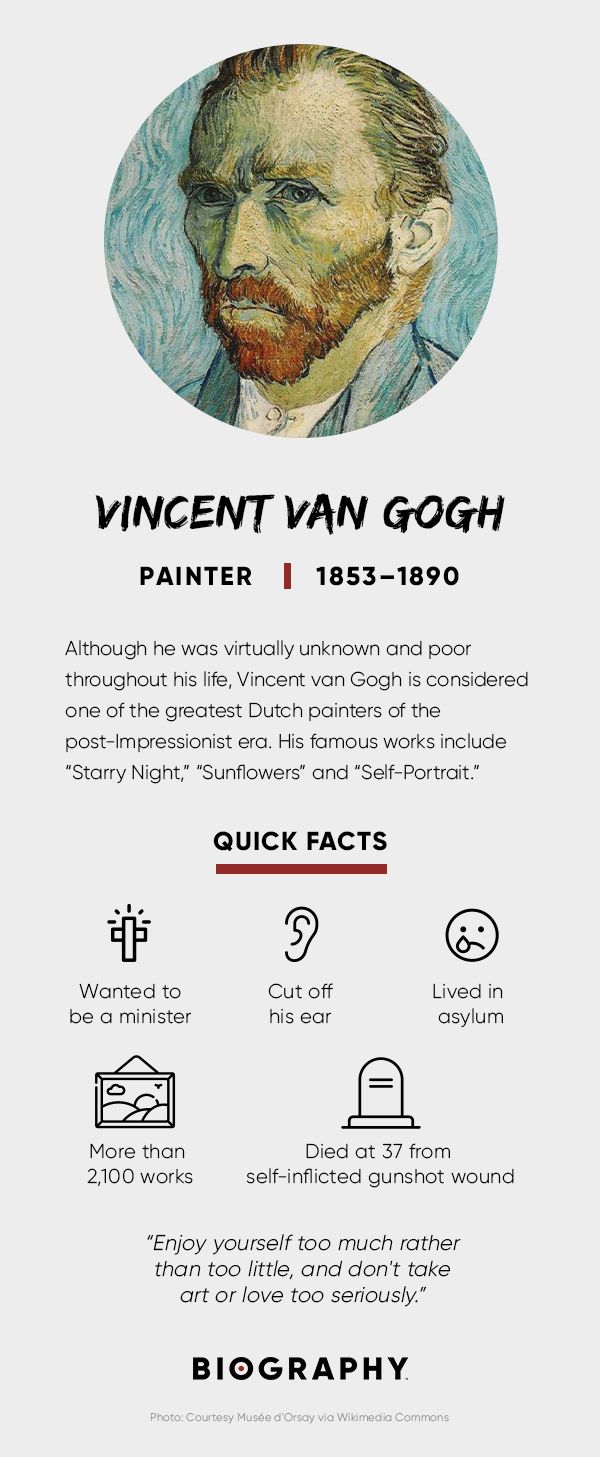
Van Gogh's love life was nothing short of disastrous: He was attracted to women in trouble, thinking he could help them. When he fell in love with his recently widowed cousin, Kate, she was repulsed and fled to her home in Amsterdam.
Van Gogh then moved to The Hague and fell in love with Clasina Maria Hoornik, an alcoholic prostitute. She became his companion, mistress and model.
When Hoornik went back to prostitution, van Gogh became utterly depressed. In 1882, his family threatened to cut off his money unless he left Hoornik and The Hague.
Van Gogh left in mid-September of that year to travel to Drenthe, a somewhat desolate district in the Netherlands. For the next six weeks, he lived a nomadic life, moving throughout the region while drawing and painting the landscape and its people.
Van Gogh became influenced by Japanese art and began studying Eastern philosophy to enhance his art and life. He dreamed of traveling there, but was told by Toulouse-Lautrec that the light in the village of Arles was just like the light in Japan.
In February 1888, van Gogh boarded a train to the south of France. He moved into a now-famous "yellow house" and spent his money on paint rather than food.
Vincent van Gogh completed more than 2,100 works, consisting of 860 oil paintings and more than 1,300 watercolors, drawings and sketches.
Several of his paintings now rank among the most expensive in the world; "Irises" sold for a record $53.9 million, and his "Portrait of Dr. Gachet" sold for $82.5 million. A few of van Gogh’s most well-known artworks include:
'Starry Night'
Van Gogh painted "The Starry Night" in the asylum where he was staying in Saint-Rémy, France, in 1889, the year before his death. “This morning I saw the countryside from my window a long time before sunrise, with nothing but the morning star, which looked very big,” he wrote to his brother Theo.
A combination of imagination, memory, emotion and observation, the oil painting on canvas depicts an expressive swirling night sky and a sleeping village, with a large flame-like cypress, thought to represent the bridge between life and death, looming in the foreground. The painting is currently housed at the Museum of Modern Art in New York, NY.
'Sunflowers'
Van Gogh painted two series of sunflowers in Arles, France: four between August and September 1888 and one in January 1889; the versions and replicas are debated among art historians.
The oil paintings on canvas, which depict wilting yellow sunflowers in a vase, are now displayed at museums in London, Amsterdam, Tokyo, Munich and Philadelphia.
In 1889, after entering an asylum in Saint-Rémy, France, van Gogh began painting Irises, working from the plants and flowers he found in the asylum's garden. Critics believe the painting was influenced by Japanese woodblock prints.
French critic Octave Mirbeau, the painting's first owner and an early supporter of Van Gogh, remarked, "How well he has understood the exquisite nature of flowers!"
'Self-Portrait'
Over the course of 10 years, van Gogh created more than 43 self-portraits as both paintings and drawings. "I am looking for a deeper likeness than that obtained by a photographer," he wrote to his sister.
"People say, and I am willing to believe it, that it is hard to know yourself. But it is not easy to paint yourself, either. The portraits painted by Rembrandt are more than a view of nature, they are more like a revelation,” he later wrote to his brother.
Van Gogh's self-portraits are now displayed in museums around the world, including in Washington, D.C., Paris, New York and Amsterdam.

Van Gogh's Ear
In December 1888, van Gogh was living on coffee, bread and absinthe in Arles, France, and he found himself feeling sick and strange.
Before long, it became apparent that in addition to suffering from physical illness, his psychological health was declining. Around this time, he is known to have sipped on turpentine and eaten paint.
His brother Theo was worried, and he offered Paul Gauguin money to go watch over Vincent in Arles. Within a month, van Gogh and Gauguin were arguing constantly, and one night, Gauguin walked out. Van Gogh followed him, and when Gauguin turned around, he saw van Gogh holding a razor in his hand.
Hours later, van Gogh went to the local brothel and paid for a prostitute named Rachel. With blood pouring from his hand, he offered her his ear, asking her to "keep this object carefully."
The police found van Gogh in his room the next morning, and admitted him to the Hôtel-Dieu hospital. Theo arrived on Christmas Day to see van Gogh, who was weak from blood loss and having violent seizures.
The doctors assured Theo that his brother would live and would be taken good care of, and on January 7, 1889, van Gogh was released from the hospital.
He remained, however, alone and depressed. For hope, he turned to painting and nature, but could not find peace and was hospitalized again. He would paint at the yellow house during the day and return to the hospital at night.
Van Gogh decided to move to the Saint-Paul-de-Mausole asylum in Saint-Rémy-de-Provence after the people of Arles signed a petition saying that he was dangerous.
On May 8, 1889, he began painting in the hospital gardens. In November 1889, he was invited to exhibit his paintings in Brussels. He sent six paintings, including "Irises" and "Starry Night."
On January 31, 1890, Theo and his wife, Johanna, gave birth to a boy and named him Vincent Willem van Gogh after Theo's brother. Around this time, Theo sold van Gogh's "The Red Vineyards" painting for 400 francs.
Also around this time, Dr. Paul Gachet, who lived in Auvers, about 20 miles north of Paris, agreed to take van Gogh as his patient. Van Gogh moved to Auvers and rented a room.
On July 27, 1890, Vincent van Gogh went out to paint in the morning carrying a loaded pistol and shot himself in the chest, but the bullet did not kill him. He was found bleeding in his room.
Van Gogh was distraught about his future because, in May of that year, his brother Theo had visited and spoke to him about needing to be stricter with his finances. Van Gogh took that to mean Theo was no longer interested in selling his art.
Van Gogh was taken to a nearby hospital and his doctors sent for Theo, who arrived to find his brother sitting up in bed and smoking a pipe. They spent the next couple of days talking together, and then van Gogh asked Theo to take him home.
On July 29, 1890, Vincent van Gogh died in the arms of his brother Theo. He was only 37 years old.
Theo, who was suffering from syphilis and weakened by his brother's death, died six months after his brother in a Dutch asylum. He was buried in Utrecht, but in 1914 Theo's wife, Johanna, who was a dedicated supporter of van Gogh's works, had Theo's body reburied in the Auvers cemetery next to Vincent.
Theo's wife Johanna then collected as many of van Gogh's paintings as she could, but discovered that many had been destroyed or lost, as van Gogh's own mother had thrown away crates full of his art.
On March 17, 1901, 71 of van Gogh's paintings were displayed at a show in Paris, and his fame grew enormously. His mother lived long enough to see her son hailed as an artistic genius. Today, Vincent van Gogh is considered one of the greatest artists in human history.
Van Gogh Museum
In 1973, the Van Gogh Museum opened its doors in Amsterdam to make the works of Vincent van Gogh accessible to the public. The museum houses more than 200 van Gogh paintings, 500 drawings and 750 written documents including letters to Vincent’s brother Theo. It features self-portraits, “The Potato Eaters,” “The Bedroom” and “Sunflowers.”
In September 2013, the museum discovered and unveiled a van Gogh painting of a landscape entitled "Sunset at Montmajour.” Before coming under the possession of the Van Gogh Museum, a Norwegian industrialist owned the painting and stored it away in his attic, having thought that it wasn't authentic.
The painting is believed to have been created by van Gogh in 1888 — around the same time that his artwork "Sunflowers" was made — just two years before his death.
Watch "Vincent Van Gogh: A Stroke of Genius" on HISTORY Vault

QUICK FACTS
- Name: Vincent van Gogh
- Birth Year: 1853
- Birth date: March 30, 1853
- Birth City: Zundert
- Birth Country: Netherlands
- Gender: Male
- Best Known For: Vincent van Gogh was one of the world’s greatest artists, with paintings such as ‘Starry Night’ and ‘Sunflowers,’ though he was unknown until after his death.
- Astrological Sign: Aries
- Brussels Academy
- Nacionalities
- Interesting Facts
- Some of van Gogh's most famous works include "Starry Night," "Irises," and "Sunflowers."
- In a moment of instability, Vincent Van Gogh cut off his ear and offered it to a prostitute.
- Van Gogh died in France at age 37 from a self-inflicted gunshot wound.
- Death Year: 1890
- Death date: July 29, 1890
- Death City: Auvers-sur-Oise
- Death Country: France
We strive for accuracy and fairness.If you see something that doesn't look right, contact us !
CITATION INFORMATION
- Article Title: Vincent van Gogh Biography
- Author: Biography.com Editors
- Website Name: The Biography.com website
- Url: https://www.biography.com/artists/vincent-van-gogh
- Access Date:
- Publisher: A&E; Television Networks
- Last Updated: March 4, 2020
- Original Published Date: April 3, 2014
- As for me, I am rather often uneasy in my mind, because I think that my life has not been calm enough; all those bitter disappointments, adversities, changes keep me from developing fully and naturally in my artistic career.
- I am a fanatic! I feel a power within me…a fire that I may not quench, but must keep ablaze.
- I get very cross when people tell me that it is dangerous to put out to sea. There is safety in the very heart of danger.
- I want to paint what I feel, and feel what I paint.
- As my work is, so am I.
- The love of art is the undoing of true love.
- When one has fire within oneself, one cannot keep bottling [it] up—better to burn than to burst. What is in will out.
- For my part I know nothing with any certainty, but the sight of the stars makes me dream.
- I do not say that my work is good, but it's the least bad that I can do. All the rest, relations with people, is very secondary, because I have no talent for that. I can't help it.
- What is wrought in sorrow lives for all time.
- What I draw, I see clearly. In these [drawings] I can talk with enthusiasm. I have found a voice.
- Enjoy yourself too much rather than too little, and don't take art or love too seriously.
- But I always think that the best way to know God is to love many things.
Famous Painters

11 Notable Artists from the Harlem Renaissance

Fernando Botero

Gustav Klimt

The Surreal Romance of Salvador and Gala Dalí

Salvador Dalí

Margaret Keane

Andy Warhol

Who are they?
Who is Vincent van Gogh?
You might know the name Van Gogh, but do you know who he really was?
Vincent van Gogh Sunflowers 1888 National Gallery, London
The man who painted Sunflowers
Vincent van Gogh is one of the world’s most famous painters. When you start school, one of the first artworks that you will ever look at is probably Van Gogh’s Sunflowers . This painting is very famous. Look at its bright yellows and the way each of the fourteen sunflowers are painted differently. Van Gogh painted Sunflowers for the room in the yellow house he was renting in Arles, France. His friend, the painter Paul Gauguin, was coming to visit and Van Gogh wanted to redecorate.
Why is he so famous?
Vincent van Gogh Starry Night over the Rhone 1889 Musée d'Orsay, Paris
Today, most people know the name Vincent van Gogh. However, when he was alive, he was not very famous at all. Since his death, he has become one of the most successful painters in history. People across the world have admired his unique style. If you look closely at his paintings, the brushstrokes are broken up. It is as if you can see each time Van Gogh put his brush on the canvas. Do you like this style?
In total, Van Gogh made around 2,100 artworks. So, if you only know Sunflowers , there are many more paintings by him to discover.
What inspired him?
Vincent van Gogh The Bedroom 1889 Musée d'Orsay, Paris
Van Gogh was born in the Netherlands, but travelled across Europe. He went to France, Belgium and England. When he was in London, he was inspired by all the art he saw in galleries. Van Gogh’s brother, Theo, worked in an art gallery and introduced Van Gogh to many artworks. Van Gogh was interested in painters who were painting everyday life.
When he was 27, he decided to become an artist. Up until then, he had been a teacher, a shop assistant and had dreams of working for the Church. All of these experiences inspired his art.
Why did he die so young?
Vincent van Gogh Self Portrait, Autumn 1889 National Gallery of Art (Washington, USA)
It is a really sad story. Van Gogh struggled with mental health problems. This meant that he sometimes felt very angry or sad and was not able to control his emotions. Sometimes, he would harm himself and have blackouts. Van Gogh used painting as a way to express his emotions and way to help with his illness.
Van Gogh’s did not get the help he needed and there was not the same understanding of mental health as there is today. Van Gogh felt alone and was not able to handle the pressure of his emotions. He died by suicide. He was only 37. It is sad to think of all the wonderful artworks he could have painted had he gotten better.
What did he paint?
Vincent van Gogh Farms near Auvers (1890) Tate
Van Gogh liked to paint the places he visited. When you look at his paintings, you can almost imagine you are there with him. In Farms near Auvers , the bright greens make you feel like you are standing in the French countryside. This painting was made towards the end of Van Gogh’s career. Earlier, he had used darker colours. As he grew older, he liked using lighter colours.
Van Gogh also liked painting portraits. He said that portraits were
'the only thing in painting that moves me deeply’
Van Gogh painted portraits of many different people he met, but he really liked painting portraits of himself. He made over 30 self-portraits. You can also try and paint your own self-portrait. Try looking at yourself in the mirror or in a photograph to get you inspired.
Vincent van Gogh The Oise at Auvers (1890) Tate
More to Explore
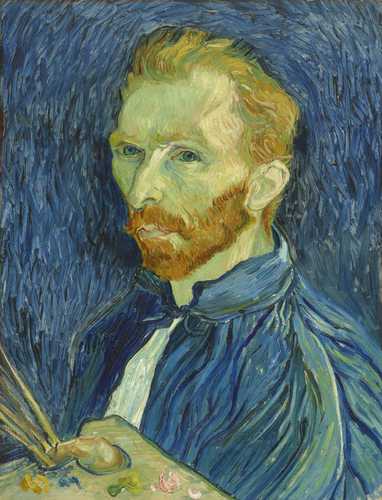
Create Art Like Van Gogh
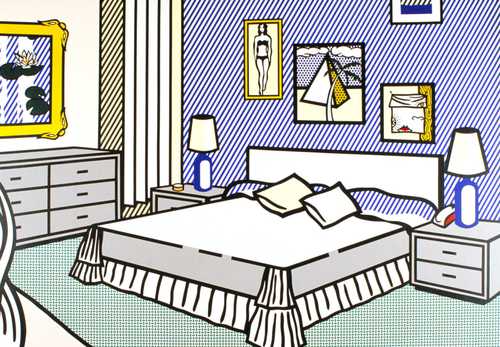
Quiz: Which Artist Should Design Your Bedroom?
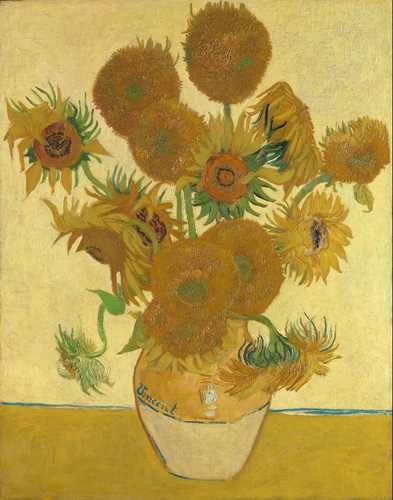
Quiz: Van Gogh Beat the Clock Challenge

- My presentations
Auth with social network:
Download presentation
We think you have liked this presentation. If you wish to download it, please recommend it to your friends in any social system. Share buttons are a little bit lower. Thank you!
Presentation is loading. Please wait.
Vincent Van Gogh Life, Works, Techniques & Style.
Published by Kevin Fox Modified over 5 years ago
Similar presentations
Presentation on theme: "Vincent Van Gogh Life, Works, Techniques & Style."— Presentation transcript:

Vincent willem van Gogh was a Dutch Post- Impressionist artist. Some of his paintings are now among the worlds best known, most popular and expensive works.

Vincent van Gogh Born in Netherlands Oldest of 6 kids Many unsuccessful jobs Very poor Brother Theo supported him Often didnt eat much to buy.

VINCENT VAN GOGH. By: Charo Cabanes. MASTER OF THE IMPRESSIONISM.

Vincent Van Gogh Copyright The Life of an Artist.

Post-Impressionist Painter

Looking inside Vincent van Gogh born 1853 died 1890.

Vincent Van Gogh (1853 ~ 1890 ) Vincent painted this picture of himself. Does he look happy or sad ? Art Masterpiece.

Van Gogh Mrs. Durnil With self- portrait of Van Gogh.

Van Gogh Post-Impressionism By Will Heinberg and Ben Cleff.

Vincent Van Gogh A Study in Still Life Art Mr. Alomar’s 2/3 Class Written by Ingrid Piccirilli Presented by Pandora Argue.

Van Gogh’s Sunflowers Self-Portrait, 1887

A Starry Night Art Appreciation Lesson

Vincent Van Gogh ( ) Early Life Vincent loved to draw as a child Though he did not paint until he was about 20 years old. Grew up very.

Vincent van Gogh Painter Vincent van Gogh Painter

Post impressionism. background Termed coined by Roger Fry as he readied an exhibit for a gallery in London in 1910 Lasted from mid 1880’s to early 1900’s.

Vincent van Gogh.

Life, Works, Techniques & Style. Van Gogh Facts and Numbers: Born 1853, Died 1890 He only sold one painting during his lifetime; his brother Theo bought.

Vincent van Gogh The Power of Color. Vincent van Gogh Dutch painter, Color was his chief symbol of expression One of the most well-known.

Pictures from: Mark Harden’s Van Gogh was born in 1853 in Holland. He was largely self-taught as an artist, but he did have help from.

Vincent Van Gogh Vincent Van Gogh is known mostly for two things: His color saturated paintings, and The fact that he committed suicide at age 37.
About project
© 2024 SlidePlayer.com Inc. All rights reserved.
Visiting Sleeping Beauties: Reawakening Fashion? You must join the virtual exhibition queue when you arrive. If capacity has been reached for the day, the queue will close early.

Van Gogh's Cypresses
Entering the exhibition.
You must join the virtual exhibition queue via QR code once inside the Museum. No advance or timed tickets required. Access is first come, first served and subject to capacity limitations. The virtual queue closes daily when capacity is reached.
Special Access Met Member Morning Hours: 9–10 am every Thursday, Saturday, and Sunday starting May 27.
Visitor Guidelines
The following items are not permitted:
- Bags larger than 11 x 17 x 5 in (28 x 43 x 13 cm)
- Strollers (parking is available)
Free bag and coat check is available.
Van Gogh’s Cypresses is the first exhibition to focus on the trees—among the most famous in the history of art—immortalized in signature images by Vincent van Gogh (1853–1890). Such iconic pictures as Wheat Field with Cypresses and The Starry Night take their place as the centerpiece in a presentation that affords an unprecedented perspective on a motif virtually synonymous with the Dutch artist’s fiercely original power of expression. Some 40 works illuminate the extent of his fascination with the region’s distinctive flamelike evergreens as they successively sparked, fueled, and stoked his imagination over the course of two years in the South of France: from his initial sightings of the “tall and dark” trees in Arles to realizing their full, evocative potential (“as I see them”) at the asylum in Saint-Rémy. Juxtaposing landmark paintings with precious drawings and illustrated letters—many rarely, if ever, lent or exhibited together—this tightly conceived thematic exhibition offers an extraordinary opportunity to appreciate anew some of Van Gogh’s most celebrated works in a context that reveals the backstory of their invention for the first time. Accompanied by a catalogue.
The exhibition is made possible by the Iris & B. Gerald Cantor Foundation.
Additional support is provided by the Janice H. Levin Fund, Katharine Rayner, and the Aaron I. Fleischman and Lin Lougheed Fund.
This exhibition is supported by an indemnity from the Federal Council on the Arts and the Humanities.
The catalogue is made possible by the Janice H. Levin Fund.
Additional support is provided by Adrian Sassoon and Edmund Burke.
Exhibition Tour
Join Susan Alyson Stein, Engelhard Curator of Nineteenth-Century European Painting, on a virtual tour of the exhibition.
Exhibition Objects
Latest Reviews
a revelatory and appealingly green exhibition.
By now, you’ve surely seen his cypresses … but you’ve never seen them like this.
The tightly focused show is a pleasure and a revelation.
Search for: Search Button
Van Gogh masterpieces right into your PowerPoint slides
The full collection of Van Gogh masterpieces are available online, ready to be used in PowerPoint slides. Here’s how to get good quality images of the great man’s work and use them wisely in slides.
Not interested in Van Gogh? These tips show how to fit any image into PowerPoint as a picture or slide background.
It’s hard to visit Amsterdam and the fantastic Van Gogh Museum these days but their gorgeous collection is available online.
Our Editor-in-Chief, Peter Deegan, was lucky enough to visit the Van Gogh Museum in August 2020 with amazingly few people. Usually, you can only view the original Sunflowers with a big crowd gazing or elbowing for selfies. With COVID restrictions, Peter had no trouble with crowds!

The Museum has an ‘ Enjoy from Home ’ section of their web site. Within that you can see all their paintings .
You can download the images and use in your documents including PowerPoint slides. Make sure you don’t break any rights attached to commercial use of the images.
Find a painting or drawing and it’ll appear in a page with options to Zoom into fine detail, compare the size with a human (guess who) and download the image.

The download is a JPG of a reasonable size (Sumflowers is 609×800). That’s enough for most purposes. If you need a larger, better resolution image, try Google Image search.
Van Gogh in PowerPoint
Once you have the Van Gogh image, there are many ways to use it in PowerPoint.
Of course, just insert into a slide Insert | Picture. In PowerPoint 365, Design Ideas will probably appear with formatting suggestions.

Slide background matching the image
Matching the slide background to the image is quite easy. Right-click on the slide and choose Format Background | Solid Fill then choose the Eyedropper option from the bottom of the color selector. Mac users go to More Colors and use the Eyedropper in the Mac system color selector .

Use the Eyedropper to select a color from the image or other slide element.
Van Gogh as slide background
Or use the Great Man’s work as a slide background.
An inserted image for slide background might appear very strangely but there’s plenty of options to fix that.

Change Offset – change all the offset options to 0% that will fit the image into the slide – no matter how skewed it might look.

Tile picture as texture – shows the image in correct proportions with tiling to fill the slide.

Use Alignment and Mirror Type to change how the image is replicated across the slide.

Transparency
Van Gogh’s bold colors look great but can be too much as a background. That’s where the Transparency option lets you ‘dim’ the background so the slide text etc stands out.

Transparency – use the slider to change the background images appearance.
About this author
Office-Watch.com
Office 2021 - all you need to know . Facts & prices for the new Microsoft Office. Do you need it? Office LTSC is the enterprise licence version of Office 2021.
Office 2024 what's known so far plus educated guesses. Microsoft Office upcoming support end date checklist.
Latest from Office Watch
- How to make a Gantt Chart in Excel
- A $125 Billion lesson in why cloud backups are vital
- How Word pastes into your document
- Make monsters and pipes with the Terantopia font
- Avoid the traps when adding Excel info into a Word document
- Circle & Sphere calculations in Excel using Pi 𝜋
- How to list all fonts in a Word document
- Face with rolling eyes 🙄 emoji in Word, Outlook, Office
- Glasses 👓 emoji in Word, Excel, PowerPoint and Outlook
- Calendar extras added to new Outlook
- Changes to PDFs made by Microsoft Office
- It's official - Calibri beats Aptos in font poll
- Vmware Workstation Pro is now free
- A quiet month of security fixes for Microsoft Office
- How Mark of the Web stops bad document infections
- Introducing Reading Coach to enhance Reading Fluency with AI
- Immersive Reader in Word for Windows, Mac and iPad
- Presenter Coach makes for better PowerPoint presentations
- Word changes a Paste Text option
- Paste Text Only gets a Word shortcut and confusion

Biography of Vincent van Gogh

Van Gogh received a fragmentary education: one year at the village school in Zundert, two years at a boarding school in Zevenbergen, and eighteen months at a high school in Tilburg. At sixteen he began working at the Hague gallery of the French art dealers Goupil et Cie., in which his uncle Vincent was a partner. His brother Theo, who was born 1 May 1857, later worked for the same firm. In 1873 Goupil's transferred Vincent to London, and two years later they moved him to Paris, where he lost all ambition to become an art dealer. Instead, he immersed himself in religion, threw out his modern, worldly book, and became "daffy with piety", in the words of his sister Elisabeth. He took little interest in his work, and was dismissed from his job at the beginning of 1876.
Van Gogh then took a post as an assistant teacher in England, but, disappointed by the lack of prospects, returned to Holland at the end of the year. He now decided to follow in his father's footsteps and become a clergyman. Although disturbed by his fanaticism and odd behavior, his parents agreed to pay for the private lessons he would need to gain admission to the university. This proved to be another false start. Van Gogh abandoned the lessons, and after brief training as an evangelist went to the Borinage coal-mining region in the south of Belgium. His ministry among the miners led him to identify deeply with the workers and their families. In 1897, however, his appointment was not renewed, and his parents despaired, regarding him as a social misfit. In an unguarded moment, his father even spoke of committing him to a mental asylum.
Vincent, too, was at his wits' end, and after a long period of solitary soul-searching in the Borinage he decided to follow Theo's advice and become an artist. His earlier desire to help his fellowman was an evangelist gradually developed into an urge, as he later wrote, to leave mankind "some memento in the form of drawings of paintings - not made to please any particular movement, but to express a sincere human feeling."
His parents could not go along with this latest change of course, and financial responsibility for Vincent passed to his brother Theo, who was now working in the Paris gallery of Boussod, Valadon et Cie., the successor to Goupil's. It was because of Theo's loyal support that Van Gogh later came to regard his oeuvre as the fruits of his brother's efforts on his behalf. A lengthy correspondence between the two brothers (which began in August 1872) would continue until the last days of Vincent's life.
When Van Gogh decided to become an artist, no one, not even himself, suspected that he had extraordinary gifts. His evolution from an inept but impassioned novice into a truly original master was remarkably rapid. He eventually proved to have an exceptional feel for bold, harmonious color effects, and an infallible instinct for choosing simple but memorable compositions.
In order to prepare for his new career, Van Gogh went to Brussels to study at the academy, but left after only nine months. There he got to know Anthon van Rappard, who was to be his most important artist friend during his Dutch period.
In April 1881, Van Gogh went to live with his parents in Etten in North Brabant, where he set himself the task of learning how to draw. He experimented endlessly with all sorts of drawing materials, and concentrated on mastering technical aspects of his craft like perspective, anatomy, and physiognomy. Most of his subjects were taken from peasant life.
At the end of 1881 he moved to The Hague, and there, too, he concentrated mainly on drawing. At first he took lessons from Anton Mauve, his cousin by marriage, but the two soon fell out, partly because Mauve was scandalized by Vincent's relationship with Sien Hoornik, a pregnant prostitute who already had an illegitimate child. Van Gogh made a few paintings while in The Hague , but drawing was his main passion. In order to achieve his ambition of becoming a figure painter, he drew from the live model whenever he could.
In September 1883 he decided to break off the relationship with Sien and follow in the footsteps of artists like Van Rappard and Mauve by trying his luck in the picturesque eastern province of Drenthe, which was fairly inaccessible in those days. After three months, however, a lack of both drawing materials and models forced him to leave. He decided once again to move in with his parents, who were now living in the North Brabant village of Nuenen, near Eindhoven.
In Nuenen, Van Gogh first began painting regularly, modeling himself chiefly on the French painter Jean-Francois Millet (1814 - 1875), who was famous throughout Europe for his scenes of the harsh life of peasants. Van Gogh set to work with an iron will, depicting the life of the villagers and humble workers. he made numerous scenes of weavers. In May 1884, he moved into rooms he had rented from the sacristan of local Catholic church, one of which he used as his studio.
At the end of 1884 he began painting and drawing a major series of heads and work-roughened peasant hands in preparation for a large and complex figure piece that he was planning. In April 1885 this period of study came to fruition in the masterpiece of his Dutch period, The Potato Eaters
In the summer of that year, he made a large number of drawings of the peasants working in the fields. The supply of models dried up, however, when the local priest forbade his parishioners to pose for the vicar's son. He turned to painting landscape instead, inspired in part by a visit to recently opened Rijksmuseum in Amsterdam.
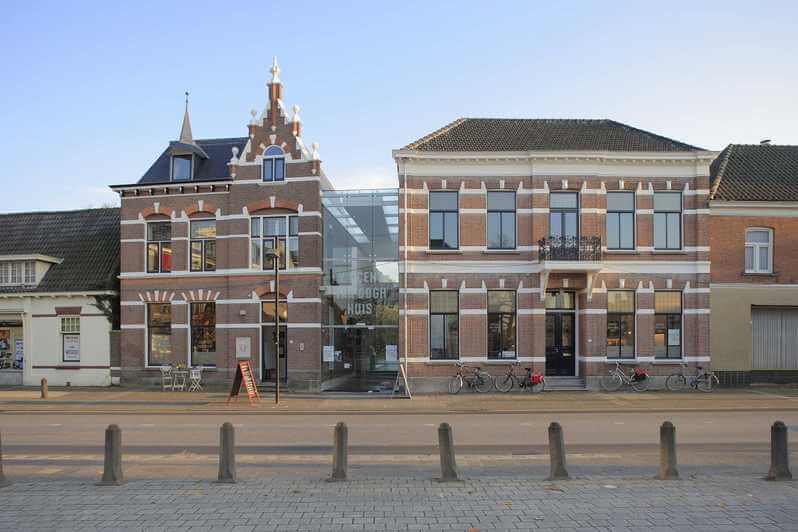
I feel - a failure. That's it as far as I'm concerned - I feel that this is the destiny that I accept, that will never change. ”
He nevertheless continued working hard during his two months in Auvers, producing dozens of paintings and drawings. On 27 July 1890, Vincent van Gogh was shot in the stomach, and passed away in the early morning of 29 July 1890 in his room at the Auberge Ravoux in the village of Auvers-sur-Oise. Although official history maintains that Van Gogh committed suicide, the latest research reveals that Van Gogh's death might be caused by an accident.
Theo, who had stored the bulk of Vincent's work in Paris, died six months later. His widow, Johanna van Gogh-Bonger (1862 - 1925), returned to Holland with the collection, and dedicated herself to getting her brother-in-law the recognition he deserved. In 1914, with his fame assured, she published Vincent van Gogh's letters between the two brothers.
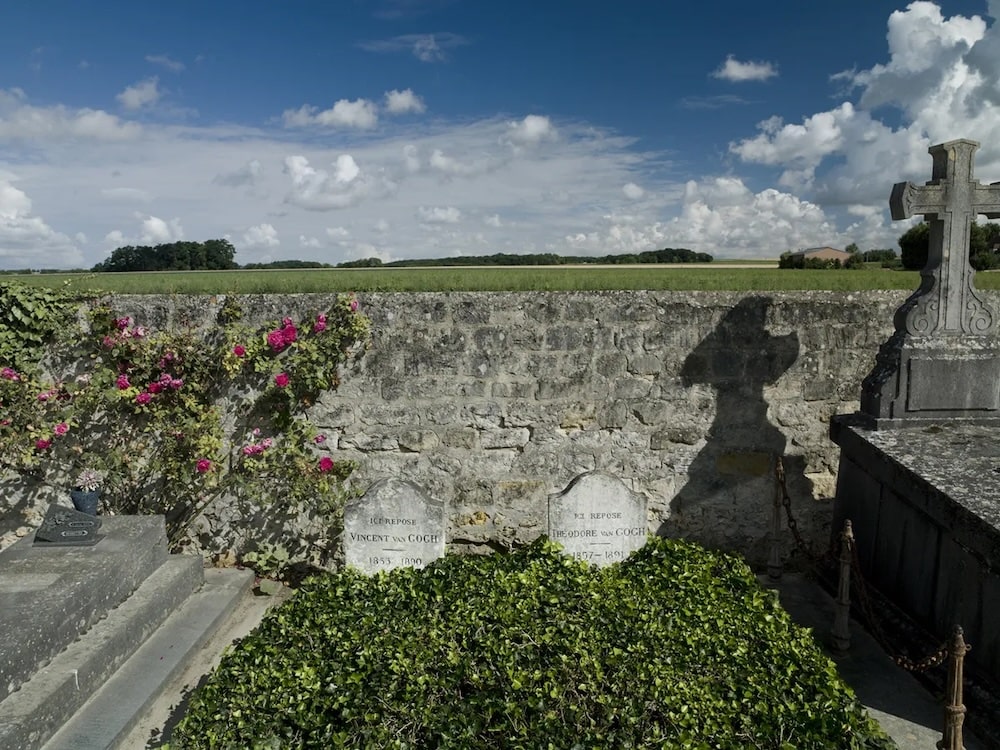
The Starry Night
Café terrace at night, vincent van gogh's letters, van gogh self portrait, the starry night over the rhone, wheatfield with crows, the night cafe, the potato eaters, the yellow house, almond blossom, the church at auvers, at eternity's gate by vincent van gogh, portrait of dr. gachet, portrait of the postman joseph roulin by vincent van gogh, self portrait with bandaged ear.
Van Gogh · New presentation of the artist's works at the Musée d'Orsay
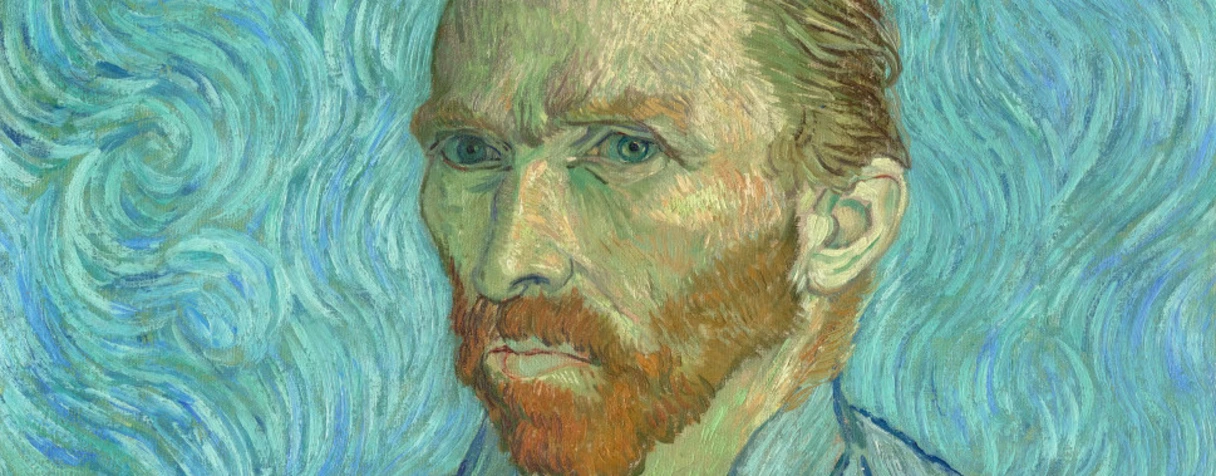
Since February 6, 2024, the Musée d'Orsay has been offering visitors a new presentation of works by Vincent van Gogh in rooms 36 and 37. Located at the end of the Impressionist gallery, this new space offers better conditions for visiting and contemplating the artist's works. To highlight the paintings, the picture rails are painted blue, echoing the colors used by the artist on his canvases. These larger rooms, more conducive to wandering, present Vincent van Gogh's career in France through his paintings: Paris, Arles and Auvers-sur-Oise. They also show the special bond that developed between the painter and Docteur Gachet in the last weeks of his life.
“The aim of the new presentation is to give greater visibility to Van Gogh's works, which are so popular with visitors.” Personne citée Jean-Rémi Touzet, Paint curator
Room 36 · Vincent van Gogh in France (1886-1890)
Vincent van Gogh (1853-1890), born in the Netherlands, was 33 when he arrived in Paris in 1886. His style changed as he came into contact with impressionist painting and the young artists he met, including Paul Signac and Émile Bernard, who were seeking to invent an art in which colour and simplicity of drawing took precedence.
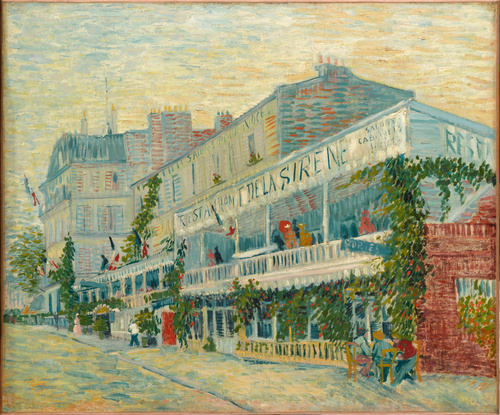
In 1888, tired of the hustle and bustle of Paris, he settled in sunny Arles. He intended to found a colony of artists. Despite the graphic and luminous power of his paintings, his project was a failure that plunged him into disarray. He mutilated his ear and was committed in Saint-Rémy-de-Provence, where he continued to paint despite his episodes.
At the end of May 1890, he made a fresh start in Auvers-sur-Oise, an artists’ village near Paris. He worked intensely, but soon lost all illusions of recovery and artistic recognition. On 27 July, he took his own life by shooting himself in the chest.
Playing with variations of brushstrokes and harmonies of colour, Van Gogh compared his art to music, a “consoling art” and the expression of a personal vision.
Room 37 · The Paul Gachet collection
When Van Gogh decided to leave the hospital in Saint-Rémy-de-Provence, convinced that he had caught “a southern disease”, he expressed a wish to be taken in by the Impressionist painter Camille Pissarro. Pissarro refused, but suggested that he go to Auvers-sur-Oise, a village frequented by artists where the doctor Paul Gachet (1828-1909) practised.
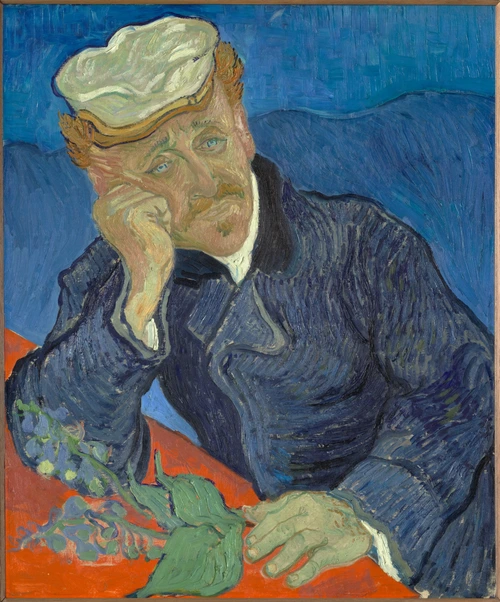
A doctor specialising in “melancholy” and nervous illnesses, Gachet monitored Van Gogh’s state of health. An amateur painter and engraver himself, under the pseudonym of Paul Van Ryssel, he was close to the Impressionists, from whom he bought several paintings, notably by Cézanne, Guillaumin, Monet and Renoir. Gachet was one of the first art lovers to collect works by Van Gogh. He posed for the painter, who gave him a number of works, and he obtained others from Theo van Gogh after his death. He owned up to twenty-seven paintings, twenty drawings and three prints by the artist.
Heirs to their father’s collection, Marguerite Gachet (1869-1949) and Paul Gachet junior (1873-1962) donated it to the Musée du Louvre between 1949 and 1954, where it remained until the opening of the Musée d’Orsay.
To discover also
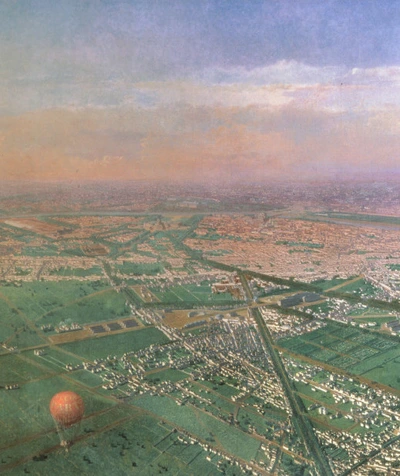
New rooms Paris, the capital of a modern nation

New mediation station in front of the model of the Paris Opera House
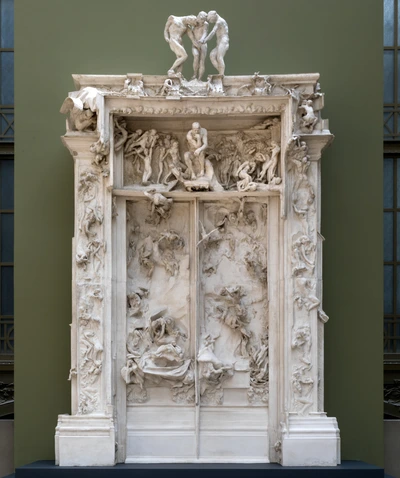
New presentation of Rodin's Gates of Hell
In bookstore.
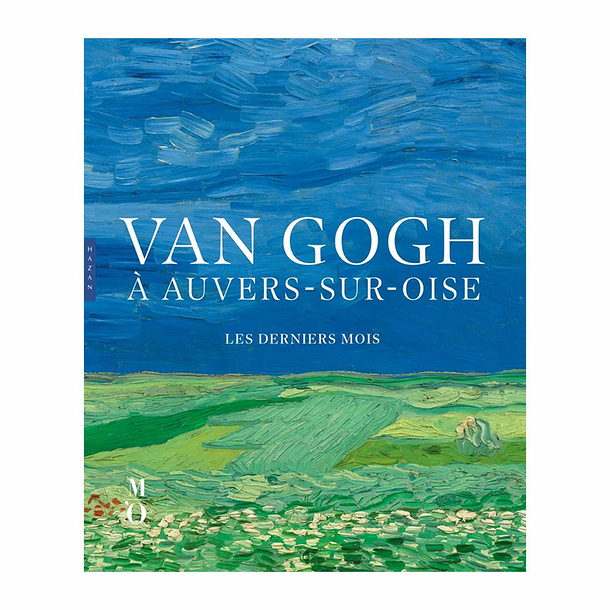
Got any suggestions?
We want to hear from you! Send us a message and help improve Slidesgo
Top searches
Trending searches

memorial day
12 templates

66 templates

american history
75 templates

music video
21 templates

150 templates

Impressionist Artist Van Gogh Thesis Defense
It seems that you like this template, impressionist artist van gogh thesis defense presentation, free google slides theme, powerpoint template, and canva presentation template.
Vincent van Gogh was a Dutch post-impressionist painter and is today one of the world's most famous artists. He lived from 1853 to 1890, and over the course of his life produced over 2,000 artwork pieces. Van Gogh is particularly famous for his vibrant use of colour and modern expression in his paintings. His works were heavily influenced by French Impressionism and Japanese woodcuts. Some of his most iconic pieces include Starry Night, Sunflowers, The Bedroom, and Irises. On these slides, you’ll find artworks that could’ve been painted by Van Gogh himself! Use them to speak about his troubled life, his art and the legacy he has left.
Features of this template
- 100% editable and easy to modify
- 31 different slides to impress your audience
- Contains easy-to-edit graphics such as graphs, maps, tables, timelines and mockups
- Includes 500+ icons and Flaticon’s extension for customizing your slides
- Designed to be used in Google Slides, Canva, and Microsoft PowerPoint
- 16:9 widescreen format suitable for all types of screens
- Includes information about fonts, colors, and credits of the resources used
How can I use the template?
Am I free to use the templates?
How to attribute?
Attribution required If you are a free user, you must attribute Slidesgo by keeping the slide where the credits appear. How to attribute?
Related posts on our blog.

How to Add, Duplicate, Move, Delete or Hide Slides in Google Slides

How to Change Layouts in PowerPoint

How to Change the Slide Size in Google Slides
Related presentations.

Premium template
Unlock this template and gain unlimited access

Register for free and start editing online
- All Resource
PPT Templates
Single slides.
- Pitch Deck 209 templates
- Animation 326 templates
- Vertical Report 316 templates
- Business 803 templates
- Finance 56 templates
- Construction 45 templates
- IT/Commerce 171 templates
- Medical 64 templates
- Education 45 templates
- Lifestyle 394 templates
- Pitch Decks 138 templates
- Business 541 templates
- Finance 20 templates
- Construction 75 templates
- IT/Commerce 73 templates
- Medical 27 templates
- Lifestyle 578 templates
- Pitch Decks 140 templates
- Business 469 templates
- Finance 19 templates
- Construction 64 templates
- IT/Commerce 72 templates
- Medical 29 templates
- Education 39 templates
- Lifestyle 490 templates
- Cover 266 templates
- Agenda 97 templates
- Overview 216 templates
- CEO 28 templates
- Our Team 142 templates
- Organization 48 templates
- History 38 templates
- Vision, Mission 109 templates
- Problem, Solution 193 templates
- Opportunity 154 templates
- Business Model 158 templates
- Product, Services 299 templates
- Technology 65 templates
- Market 155 templates
- Prices 56 templates
- Customers 55 templates
- Competitor 113 templates
- Business Process 151 templates
- Analysis 222 templates
- Strategy 120 templates
- Marketing, Sales 61 templates
- Profit, Loss 69 templates
- Financials 247 templates
- Timeline 122 templates
- Proposal 40 templates
- Contact Us 272 templates
- Break Slides 16 templates
- List 361 templates
- Process 351 templates
- Cycle 177 templates
- Hierarchy 98 templates
- Relationship 152 templates
- Matrix 86 templates
- Pyramid 67 templates
- Tables 145 templates
- Map 96 templates
- Puzzles 163 templates
- Graph 217 templates
- Infographics 436 templates
- SWOT 111 templates
- Icon 418 templates
- Theme Slides 138 templates
- Mockup 42 templates
- Column 315 templates
- Line 199 templates
- Pie 139 templates
- Bar 179 templates
- Area 130 templates
- X Y,Scatter 16 templates
- Stock 59 templates
- Surface 3 templates
- Doughnut 256 templates
- Bubble 65 templates
- Radar 83 templates
- Free PPT Templates 2,101 templates
- Free Keynote 2,017 templates
- Free Google Slides 2,098 templates
- Free Theme Slides 35 templates
- Free Diagram 126 templates
- Free Chart 49 templates
- New Updates
Slide Members Premium Membership Benefits
If you sign up for our premium membership, you can enjoy the better contents all year round.
- Unlimited Download
- Premium Templates
- Animation Slides
- 24/7 Support
Free Slides
- Free PPT Templates
Vincent Van Gogh "The Starry Night" - Free Powerpoint Template

- Product ID : SM-1549
- Subject : The Starry Night
- Quantity : 6 slides
- Ratio : 16:9, 4:3
- Format : MS Powerpoint
- Colors : blue white
- Languages : EN
- Used Font : Calibri
- License : Personal and commercial use
- Rating : Free
- K Keynote version : go to item chevron_right
- G Google Slides version : go to item chevron_right
Slide Description
- Presentation photos are included;
- Landscape orientation style
- Non-animated
- Easy to change colors
Membership Pricing
Premium member of Slide Members can have unlimited access to the 19,000+ advanced slide templates.
Basic (1 Day)
5 Downloads per Day
Basic (7 Days)
$ 10.99 /mo
All contents in Slide Members are available for commercial and personal use.
The contents that other members downloaded with this content

Vincent Van Gogh "Almond Blossom" - Free Powerpoint Template
Modern, simple, and clean design Landscape orientation style Trend template Easy to change colors

Vincent Van Gogh "The Cafe Terrace on the Place Du Forum" - Free PPT Sample
Modern, simple, and clean design Creative slides Non-animated Easy color change

Paul Cezanne "Bouquet of Flowers" - Free Powerpoint Template
Smart and innovative presentation slides Trend template Latest Templates support version Easy color change

Jean Auguste Dominique Ingres "LA Grande Odalisque" - Free Powerpoint Template
All images included Non-animated No animation template Easy color change

Free PPT Template - Paul Klee "La Révolution des viaducs"
Professional business presentation Clean, modern, and creative slides Clean style Easy to change colors

Vincent Van Gogh "The Starry Night" - Google Slides Images Free Download
Modern and clean design Drag & drop image placeholders Modern, attractive, and business-friendly colors Image placeholders

Vincent Van Gogh "Almond Blossom" - Free Images for Google Slides
Modern, simple, and clean design Format: PowerPoint (.pptx) - designed with Microsoft PowerPoint 2016 Clean, modern, and creative slides Easily editable data driven charts (pie, bar, line)

Vincent Van Gogh "Wheat Field With Cypresses" - Free Presentation Template
No animation template Trend template Easily editable content Easy to change colors
Slide Members
All Rights Reserved 2024 © Copyright Slide Members
Information
- Privacy Policy
- Terms & Conditions
Recent Slides
- 26+ Latest weekly update Powerpoint Templates & Google slides
- 19+ Recently Powerpoint Templates & Google slides Update
- 9+ New Powerpoint Templates & Google Slides Update
Vincent Van Gogh

Recommended
More related content, what's hot, what's hot ( 20 ), similar to vincent van gogh, similar to vincent van gogh ( 20 ), more from valentina meli, more from valentina meli ( 20 ), recently uploaded, recently uploaded ( 11 ).
- 1. Vincent Van Gogh «Esercito un mestiere che è sporco e difficile: la pittura»
- 2. Casa natale di Van Gogh a Zundert
- 3. Biografia 1861 - 1876 (Vincent Willem Van Gogh), nasce a GrootZundert, Olanda, il 30 marzo 1853. non concluse mai gli studi della licenza superiore inizialmente lavorò come venditore di riproduzioni di opere d’arte e poi come insegnante supplente a Parigi, si appassionò della pittura olandese; si orientò verso le tematiche religiose e tentò gli esami di ammissione alla Facoltà di Teologia di Amsterdam (senza risultato); successivamente in Belgio si prese cura dei malati e predicò la Bibbia ai minatori ebbe un rapporto particolare con il fratello Théo che spesso lo aiutò e lo incoraggiò a indirizzare le sue intenzioni verso l'espressione artistica.
- 4. La svolta artistica (1881) A L'Aja, per la prima volta, verso la fine del 1881 eseguì nature morte dipinte a olio Boccale e Pere, 1881 Wuppertal
- 5. I primi dipinti (1885) Nei suoi primi dipinti ritraeva soprattutto umili lavoratori della terra e delle miniere Mangiatori di patate, 1885, Amsterdam
- 7. Nel 1886, a Parigi (a casa del fratello Theo) seguì i corsi di pittura;
- 8. Il fratello Theo gli presentò i maggiori pittori impressionisti: Émile Bernard, Louis Anquetin e Toulouse-Lautrec
- 9. Inizialmente, la loro pittura lo interessò molto poco Pére Tauguy, 1887, Parigi
- 11. alleggerì i propri soggetti,
- 12. iniziò a dipingere soprattutto paesaggi e le nature morte; Albicocchi in fiore, 1888
- 13. Arles - Provenza (1888) Si trasferì ad Arles il 20 febbraio 1888, affittò un appartamento di quattro stanze di una casa dalle mura gialle ritratta in un quadro famoso. Qui, produsse una tela dopo l'altra, Vincent provava emozioni molto forti di fronte alla natura provenzale La casa gialla (acquarello), 1888
- 15. ondulando i contorni per accentuare le forme,
- 16. punteggiava con brevi pennellate e
- 17. spremeva il colore dal tubetto direttamente sulla tela. Vaso con iris, 1889
- 18. Il dramma di Arles (1888) Nell’ottobre 1888 giunse ad ArlesPaul Gauguin Il sogno di van Gogh era di fondare un'associazione dipittori che perseguissero un'arte nuova, ma Gauguin e van Gogh erano spesso in disaccordo La camera di Van Gogh, 1888
- 19. Il dramma di Arles (1888) una sera, al caffé, i due pittori bevvero molto e improvvisamente Vincent scagliò il bicchiere contro la testa di Gauguin L'episodio più grave accadde il 23 dicembre: van Gogh avrebbe rincorso per strada Gauguin con un rasoio. Tornato a casa, in preda ad allucinazioni, van Gogh si tagliò metà dell'orecchio sinistro, … Paul Gauguin: Ritratto di Van Gogh
- 20. A Saint-Rémy-de-Provence (1889) van Gogh aveva spesso attacchi di panico e allucinazioni e reagiva con atti di violenza e tentativi di suicidio, pare che soffrisse di psicosi epilettica e per quello fu ricoverato all’ospedale psichiatrico di Saint Remy. Davanti al manicomio di Saint Remy
- 21. A Saint-Rémy-de-Provence (1889) Nella Notte stellatavan Gogh sembra esprimere uno stato d'animo attraverso la libera fantasia, per liberare le proprie emozioni piuttosto che dipingere il paesaggio. Notte stellata, 1889
- 22. l biliardo 1888 momento inquietante Van Gogh esegue questo dipinto poco prima della sua morte, che avverrà due anni dopo, quando ormai il tormentato viaggio della sua esistenza è giunto ad un punto di non ritorno Il caffè di notte, un locale in Place Lamartine ad Arles, è un ambiente chiuso, privo di finestre, dove l'illuminazione artificiale è affidata ad un gruppo di lampade a soffitto che spargono attorno una luce giallastra. I colori della stanza sono violenti e contrastanti Scrive Vincent al fratello Theo a proposito di questo quadro: "Ho cercato di esprimere con il rosso e il verde le terribili passioni umane. La sala è rosso sangue e giallo opaco, un biliardo verde in mezzo, quattro lampade giallo limone a irradiazione arancione e verde. C'è dappertutto una lotta e un'antitesi dei più diversi verdi e rossi, nei piccoli personaggi di furfanti dormienti, nella sala triste e vuota, e del violetto contro il blu".
- 23. A Saint-Rémy-de-Provence (1889) Per quanto riguarda la sua tecnica: «l'esecuzione è vigorosa, intensa,pennellate dense e grumose. Il suo disegno rabbioso, potente…» Oliveto con nuvola bianca
- 25. Ma Vincent si sentiva sempre più abbandonato e il male che era in lui riprese il predominioRitratto del dottor Gachet, 1890
- 27. Il suicidio – 29 luglio 1890 … una domenica, dopo essere uscito per dipingere nelle campagne che circondavano il paese, in preda ad una crisi si sparò. Lo ritrovarono sdraiato sul letto e confessò di essersi sparato al petto un colpo di rivoltella. Raggiunto all’indomani dal fratello Theo, Vincent van Gogh passò con lui tutto il 28 luglio, fumando la pipa e chiacchierando seduto sul letto Sembra che le sue ultime parole fossero: «ora vorrei ritornare». Poco dopo ebbe un accesso di soffocamento, poi perse conoscenza e morì quella notte stessa, verso l'1,30 del 29 luglio.
- 28. Il genio, i capolavori I girasoli sono uno dei soggetti più celebri di Van Gogh, nonché uno dei suoi preferiti, rappresentati in oltre dieci versioni. L’artista elaborò con loro un’idea completamente nuova della natura morta, trasformandola, da un lato, in elemento decorativo, dall’altro, si potrebbe dire, in “natura viva”, piena di energia Vaso di girasoli
- 30. "Malgrado tutto mi risolleverò: prenderò in mano la mia matita, che ho abbandonato nel mio grande scoramento, e ricomincerò a disegnare." Vincent van GoghLettera 13624 settembre 1880
- 33. http://www.vggallery.com/international/italian/index.html

COMMENTS
Vincent van Gogh was born a 160 years ago (1853) in Zundert, Netherlands (Dutch). He had many jobs, such as working in an art gallery, as a teacher, in a bookstore, and as a preacher. Around 1880, Theo, his brother, suggested he become a full time artist. When he painted,Vincent liked to play with light and use loose brush strokes.
Vincent Van Gogh was born on March 30, 1853 in Groot-Zundert, Holland. He had a family of eight, with three sisters and two brothers. Van Gogh worked in multiple art galleries in Paris and London starting at age 16. Van Gogh realized selling art was not for him. He then decided to follow his father's footsteps and become a minister.
Vincent van Gogh (born March 30, 1853, Zundert, Netherlands—died July 29, 1890, Auvers-sur-Oise, near Paris, France) was a Dutch painter, generally considered the greatest after Rembrandt van Rijn, and one of the greatest of the Post-Impressionists.The striking color, emphatic brushwork, and contoured forms of his work powerfully influenced the current of Expressionism in modern art.
Some of van Gogh's most famous works include "Starry Night," "Irises," and "Sunflowers." In a moment of instability, Vincent Van Gogh cut off his ear and offered it to a prostitute. Van Gogh died ...
Vincent van Gogh is one of the world's most famous painters. When you start school, one of the first artworks that you will ever look at is probably Van Gogh's Sunflowers. This painting is very famous. Look at its bright yellows and the way each of the fourteen sunflowers are painted differently. Van Gogh painted Sunflowers for the room in ...
Here's how to do a Van Gogh presentation in PowerPoint using the Morph Transition!😊 Download the slides featured in this video ️ https://www.luisurrutia.c...
Presentation transcript: 1 Vincent Van Gogh Life, Works, Techniques & Style. 2 Van Gogh Facts and Numbers: Born 1853, Died 1890 He only sold one painting during his lifetime; his brother Theo bought it. Sadly, he killed himself at the age of 37 He painted many different subjects but 5 distinct categories are evident in his work: Landscapes ...
Van Gogh's Cypresses is the first exhibition to focus on the trees—among the most famous in the history of art—immortalized in signature images by Vincent van Gogh (1853-1890). Such iconic pictures as Wheat Field with Cypresses and The Starry Night take their place as the centerpiece in a presentation that affords an unprecedented perspective on a motif virtually synonymous with the ...
Famous Paintings by Van Gogh. Here is a gallery of Van Gogh's most famous works. Click on each painting to find out more. The Potato Eaters 1885. Sunflowers 1888. The Potato Eaters Photo courtesy of Minke Wagenaar (@flickr.com) - granted under creative commons licence - attribution.
How the bringing together of extremes—the countryside as a whole and the bustle here [in the city]—gives me new ideas. —Vincent van Gogh, letter dated around January 2, 1886. Between 1882 and 1890, five artists—Vincent van Gogh, along with Georges Seurat, Paul Signac, Emile Bernard, and Charles Angrand—flocked to villages on the ...
1 Vincent Van Gogh Dutch Painter 1853-1890 2 Van Gogh in a Nutshell 1853 -1890 Dutch Post-impressionism Influenced by Millet, Rubens, and Japanese artists. Favorite color- yellow. Subjects-nature and humanity. 3 Early Years Vincent van Gogh was born the son of a preacher in Holland in 1853. The oldest of five children, Vincent was especially ...
Matching the slide background to the image is quite easy. Right-click on the slide and choose Format Background | Solid Fill then choose the Eyedropper option from the bottom of the color selector. Mac users go to More Colors and use the Eyedropper in the Mac system color selector. Use the Eyedropper to select a color from the image or other ...
Wheat Field with Crows, 1890. On July 27, 1890, He committed suicide with a gunshot to the chest and died two days after. Without any proper training, or even having open artistic talent, Gogh doubted his abilities. However, Theo continued to push Vincent forward and supported him financially.
10. Portrait of Dr Gachet 1890 Dr. Paul Gachet, who took care of Van Gogh in his last months. In 1990, it fetched a record price of $82.5 million ($75 million, plus a 10 percent buyer's commission). There are two authentic versions of the portrait, both painted in June 1890 in Auvers-sur-Oise, near Paris.
Vincent van Gogh (March 30, 1853 - July 29, 1890) was born on 30 March 1853 in Zundert, a village in the southern province of North Brabant. He was the eldest son of the Reverend Theodorus van Gogh (1822 - 1885) and Anna Cornelia Carbentus (1819 - 1907), whose other children were Vincent's sisters Elisabeth, Anna, and Wil, and his brother Theo and Cor. Little is known about Vincent's early ...
Learn the story and meaning behind Van Gogh's masterpiece of The Starry Night in this engaging video by Great Art Explained.
Since February 6, 2024, the Musée d'Orsay has been offering visitors a new presentation of works by Vincent van Gogh in rooms 36 and 37. Located at the end of the Impressionist gallery, this new space offers better conditions for visiting and contemplating the artist's works. To highlight the paintings, the picture rails are painted blue, echoing the colors used by the artist on his canvases.
Vincent van Gogh was a Dutch post-impressionist painter and is today one of the world's most famous artists. He lived from 1853 to 1890, and over the course of his life produced over 2,000 artwork pieces. Van Gogh is particularly famous for his vibrant use of colour and modern expression in his paintings. His works were heavily influenced by ...
Vincent Van Gogh Style Art Presentation. PowerPoint Template and Google Slides Theme. Vincent van Gogh was a renowned Dutch post-impressionist painter who is widely regarded as one of the most influential figures in the history of Western art. This template celebrates the brilliance of one of the most influential artists in history.
vincent willem van gogh the starry night postimpressionist painter dutch painter famous painting masterpiece ppt templates ppt free powerpoint template. visibility 65,101 file_download 7,847. Product ID : SM-1549. Subject : The Starry Night. Quantity : 6 slides.
Apr 24, 2014 • Download as PPT, PDF •. 4 likes • 12,402 views. R. Rodriguez Lehmann. art bio for children. Education Entertainment & Humor. 1 of 32. Download now. Vangogh - Download as a PDF or view online for free.
Our beautifully designed and illustrated Van Gogh PowerPoint will give kids exciting and interesting facts and information all about Van Gogh and his paintings. Included within the PowerPoint are key milestones for Van Gogh including when he was born and died, where he was from and his family.We also have slides dedicated to the style of his paintings and a timeline of how successful he was ...
3. Biografia 1861 - 1876 (Vincent Willem Van Gogh), nasce a GrootZundert, Olanda, il 30 marzo 1853. non concluse mai gli studi della licenza superiore inizialmente lavorò come venditore di riproduzioni di opere d'arte e poi come insegnante supplente a Parigi, si appassionò della pittura olandese; si orientò verso le tematiche religiose e tentò gli esami di ammissione alla Facoltà di ...